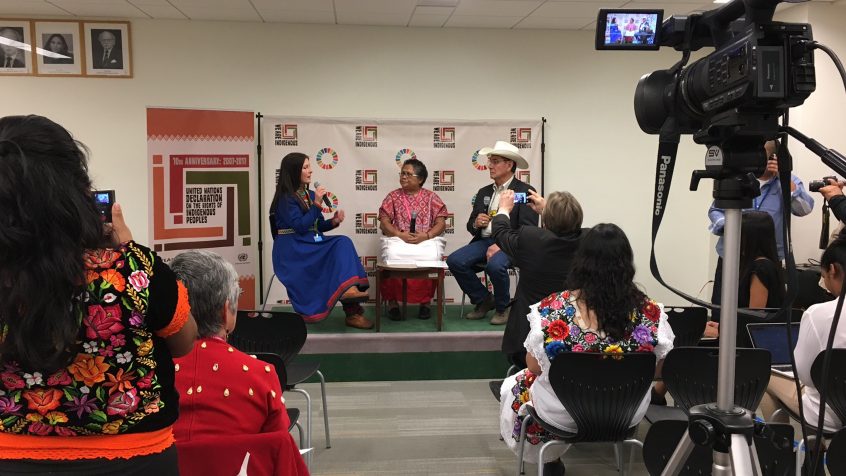
Reaching out through first ever Indigenous Media Zone
At the 16th Session of the United Nations Permanent Forum, the UN together with indigenous media groups hosted the first-ever Indigenous Media Zone at UN Headquarters in New York from 24 to 28 April 2017.
The programme featured live interviews, press conferences, workspaces for indigenous media and discussions with human rights defenders and indigenous experts.
2017 marks the tenth anniversary of the United Nations Declaration on the Rights of Indigenous Peoples (UN Declaration), which many of the media interviews focused at.
“This is my 40th year on the Declaration,” Willie Littlechild, an indigenous expert from Canada said in one of the panel discussions, which were broadcast live on DESA’s Facebook page. “I think the biggest lesson I learned is that you can never give up. I think many times we felt that it’s of no use and we can’t succeed but we kept going.”
The goal behind the 5-day Indigenous Media Zone was to provide a space for indigenous and mainstream media to cover the Sixteenth session of the UN Permanent Forum on Indigenous Issues through their own media channels, languages and perspectives.
Within the UN system, the Permanent Forum is mandated to deal with indigenous issues related to economic and social development, culture, the environment, education, health and human rights.
To promote this, indigenous media representatives, journalists, bloggers as well as non-indigenous media including UN correspondents were invited to cover the press conference and interviews.
But the milestone of reaching the UN Declaration’s adoption 10 years ago was just the beginning.
“It’s important to recognize that while these instruments are there to help us to achieve our dream of autonomy and of full recognition of our rights of our land and resources, the problem comes to the implementation,” indigenous expert Christina Coc of Ketchi Maya in Belize, said in the panel discussion focusing on the struggle over indigenous lands and territories.
And indeed, indigenous peoples from all parts of the world have been the driving force of their own future. Since 2007, there has been progress in some countries in terms of taking constitutional and legislative measures to recognize the rights and identity of indigenous peoples. But more needs to be done at the national and local levels.
“The Declaration is such a milestone if you look historically,” Aasa Larsson-Blind, indigenous expert and Vice President of the Saami Council in Sweden, said during one of the panel discussions. “Now it’s about getting it implemented so we can finally see change in ordinary lives around the world.
“We’re not there yet, but we have something to live up to.”
In addition to discussions on the UN Declaration and indigenous lands and territories, panels also elaborated on indigenous youth and their challenge of walking between two worlds, indigenous Members of Parliament and indigenous rights in Mexico City’s Constitution.
The live broadcasts via UN DESA’s Facebook page can be accessed via the main website of the 16th Session of the UN Permanent Forum on Indigenous Issues (check under “Indigenous Media Zone”), which comes full circle on 5 May.

Follow Us